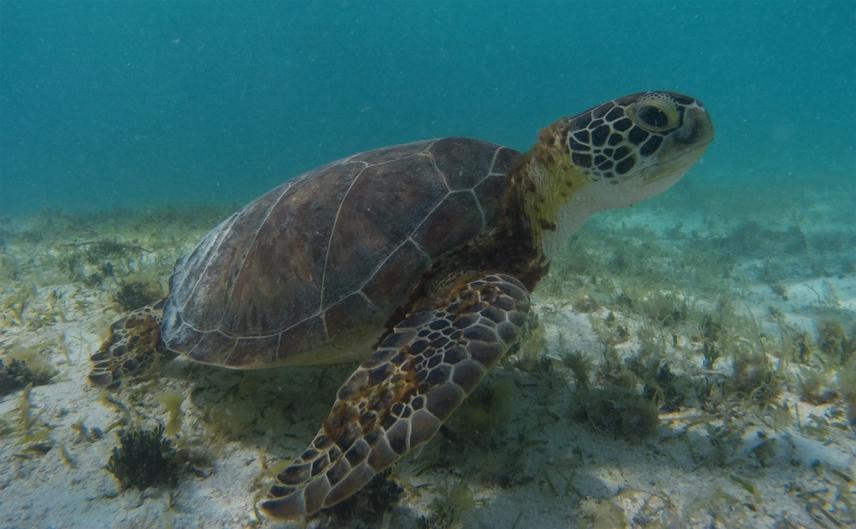Article featuring the project on Universidad Nacional de Colombia Unperiodico
Miguel David Barrios Amaya
The goal of this project is to provide useful information for the management and conservation of the T. testudinum meadows in the Seaflower Biosphere Reserve, determining the genetic diversity, population structure, clonality and connectivity within and among populations. Thus, find out if human activities influence the genetic characteristics of the meadows by comparing the populations which are exposed to anthropogenic stress and the ones located in areas with very few human disturbances.
Additionally, to have direct impact on the seagrasses conservation in the biosphere reserve, we plan to have the decision makers and other stakeholders of the archipelago of San Andres, Providencia and Santa Catalina all together through a workshop, to find strategies for a better management of this ecosystem, based on the results of this project, socio-economic context and environmental information from the region, instead of studies carried out in mainland or different locations of the Caribbean.

Turtle grass (Thalassia testudinum) is distributed along the Caribbean coasts and islands, creating extensive meadows, proper ecosystems which provide services such as primary production, carbon sequestration, sediment stability, nutrient cycling, and structural habitat and food for thousands of marine species, being refuge for juvenile fish of economically important species. Nevertheless, the seagrass meadows have faced significant pressures caused by humans, mainly in the last decades. According to more than 200 studies across the world, seagrasses are disappearing at a rate of 110 Km2/year since 1980, something to worry about. Besides this, people in general are not aware of the importance of this ecosystem, making conservation and management even more challenging. The Seaflower Biosphere Reserve is an Archipelago with a huge natural and cultural richness, really close interaction humans-nature and, at the same time, big challenges in terms of conservation, where it is easy to find a contrast between well preserved islands and other over exploited by tourism, commerce and other activities.
Conservation genetics is a discipline that integrates the ecology and biology of the organisms, populations and species, with the need of their protection and conservation, taking into account external factors, generally anthropogenic, which may cause negative impacts on them. With this project, we aim to widely understand the population’s dynamics of T. testudinum meadows in different islands of the Seaflower Biosphere Reserve, through SSR (Simple Sequence Repeat) microsatellites data. It allows us to assess the genetic diversity, structure and connectivity of the populations of the species, and consequently, their “health”, adaptation capacity and the risk that they are exposed to in terms of species declines, local and general extinctions.
Due to the fact that there is no successful conservation project without the participation of the local community and stakeholders, we will provide capacity building opportunities through a workshop focused on increase the awareness about the importance of seagrasses and the establishment of management strategies for this ecosystem, with the decision makers of the Archipelago, lecturers, students, fishers and people from other areas. This activity will therefore be developed in association with Universidad Nacional de Colombia – Caribbean campus (San Andres Island) and the local environmental authority CORALINA.